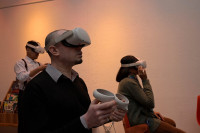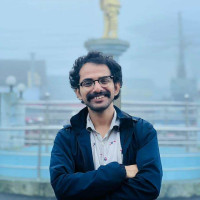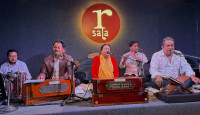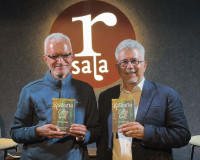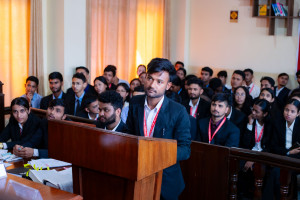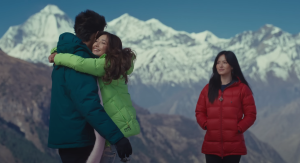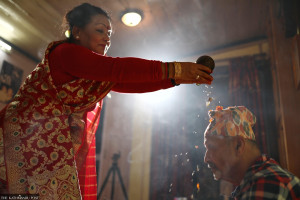Culture & Lifestyle
How reading fuels filmmaking and direction
Aasutosh Dhoj Karki, CEO and MD of Creative Makura, discusses books’ role in shaping characters, narratives, and cinematic worlds.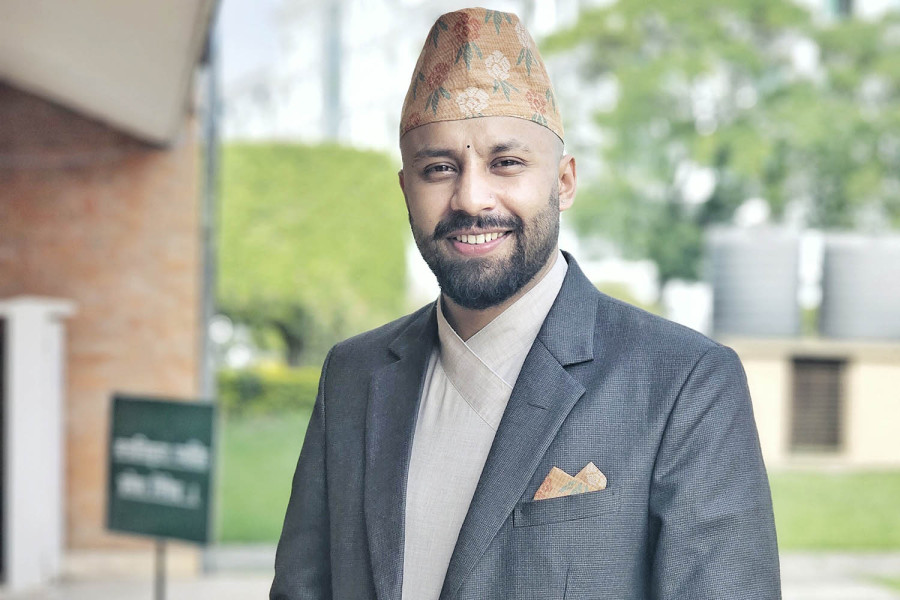
Timila Maharjan
Aasutosh Dhoj Karki is a filmmaker and creative professional. He is also the CEO and Managing Director of Creative Makura Media and a co-founder of SOCHAI. He is the writer and director of the feature film ‘Jump’. In this conversation with the Post’s Timila Maharjan, Karki explains the role of books in his filmmaking and leadership journey.
When did you start reading?
My love for books began during our mandatory library class in grade three or four. I vividly remember picking up Goosebumps by RL Stine. These thrilling horror stories, often with interactive, role-playing elements, opened my eyes to the limitless possibilities of storytelling beyond academics.
Do books inspire you as a filmmaker?
Frank Herbert’s ‘Dune’ has impacted my approach to storytelling. The intricacy of its world-building and its exploration of politics, religion, and human nature taught me how layered narratives can immerse an audience and leave a lasting impression. Herbert’s ability to create a vast and deeply personal universe has inspired me to think critically about the worlds I build in my films, ensuring every detail serves a purpose in the larger story.
Amish Tripathi’s ‘Immortals of Meluha’ introduced me to a fresh way of reimagining mythology. His ability to modernise ancient tales while retaining their essence resonated with me as a storyteller. It reminded me of the power of cultural roots in crafting relatable stories, a lesson I often draw upon when creating characters and narratives that balance authenticity with broad appeal.
Nonfiction books like Brian Tracy’s ‘Eat That Frog’ and James Clear’s ‘Atomic Habits’ have been invaluable practical tools. As a filmmaker, managing time, overcoming procrastination, and building sustainable habits are crucial for juggling creative and logistical responsibilities.
Chris Voss’s ‘Never Split the Difference’ has been another game-changer for me. This book’s insights into psychological tactics and negotiation strategies helped me in real-life interactions and writing a feature film script in the crime thriller genre.
How does literature help direct and produce films?
Books help you visualise. When reading, I’m compelled to create mental images of the characters, settings, and emotions that leap off the page. Unlike films, where visuals are presented directly to the audience, books require readers to construct the world in their minds. This process sharpens my imagination and pushes me to envision scenes. As a filmmaker, I aim to replicate that immersive experience on the screen.
The challenge lies in translating the abstract mental images books inspire into tangible visuals that can evoke the same emotions. Whether through camera angles, lighting, or art direction, I strive to recreate the sense of wonder a book delivers.
Books also influence the way I approach pacing and structure in storytelling. Many great authors weave narratives that ebb and flow, creating tension, resolution, and introspection moments. This rhythm helps me refine the narrative arc of my films.
Ultimately, books are like blueprints for emotional storytelling, showing how words alone can create worlds. As a filmmaker, I craft those lessons into a visual and auditory experience that resonates just as deeply.
In what ways do you think literature connects with or influences the themes explored in Nepali cinema and media?
Literature mirrors society and culture. Our literature reflects the values, struggles, and complexities of Nepali life, and this is often echoed in our cinema. Many Nepali filmmakers draw inspiration from literary works through direct adaptations or by exploring themes rooted in our cultural narratives, folklore, and history. This intersection allows films to engage with the audience on a deeper level as they resonate with familiar stories and societal issues.
Did morality, psychology, and history themes influence your direction for ‘Jump’?
Yes, these themes influenced ‘Jump’, especially considering it’s a psychological thriller. My understanding of human psychology, which I've explored through various books, informed the way the human mind processes loss, trauma, and the moral dilemmas that arise from them. These concepts played a significant role in shaping the emotional depth of the characters and their internal struggles. I wanted the audience to feel the psychological tension and complexity of the characters' situations.
That said, the direction was more intuitive and hands-on rather than influenced by specific books. It was a new experience, and I had to trust my instincts and the collaborative process with my team. Morality has been a constant theme in my personal life, often discussed with friends, and it became central to the film’s story. The film centres around questions of right and wrong, guilt, and redemption, exploring how far someone might go when faced with these moral dilemmas.
What was your writing process for the movie?
The writing process for ‘Jump’ was visually driven, focusing on the characters’ journeys within the film’s political and socio-cultural context. Instead of a traditional script, I wrote the dialogue’s essence, allowing actors to feel authentic and grounded and bring their interpretations during rehearsals and workshops. This collaborative approach refined the script, adding natural flow and depth to the characters.
The final version of the script was only completed after we had done a lot of rehearsals, where we worked through the scenes and the characters’ emotional arcs. ‘Jump’ wasn't directly influenced by any particular literature, though the real-world complexities and struggles that broader themes informed the characters faced in society, politics, and personal identity. The writing process was more about translating these real-world dynamics into something authentic.
How has reading contributed to your leadership in the business world?
Reading has been a crucial part of my leadership journey, providing valuable perspectives and practical insights that have shaped my approach to business and social impact. One book that stands out is ‘Factfulness’ by Hans Rosling. It reminded me of the importance of seeing the world as balanced, evolving, and full of challenges and progress. It helped me develop a more grounded view of global issues, which I carry into my leadership decisions at Creative Makura.
Non-fiction books like ‘The Psychology of Money’ have helped me better manage finances. At the same time, ‘The Pocket MBA’ filled in gaps in my business knowledge, given that my background is in film and not formal business education. The Pareto Principle and various works on empathy have shaped my approach to managing teams and fostering a company culture that values collaboration, understanding, and efficiency.
Do you plan to write a book someday?
Yes, I would love to write a book someday. It would likely be a fictional exploration of Nepal’s myths, magical landscapes, and the unique stories of its people. Our diverse cultures and terrains hold countless untold tales I’d love to bring to life.
Aasutosh Dhoj Karki’s book recommendations
Sapiens
Author: Yuval Noah Harari
Publisher: Vintage
Year: 2011
Harari’s book explores human history, offering a unique perspective on where we have come from and where we are headed.
On Writing
Author: Stephen King
Publisher: Pocket Books
Year: 2000
This book is a treasure trove of insights into storytelling from one of the greatest writers of our time.
Story
Author: Robert McKee
Publisher: Regan Books
Year: 1997
This is a vital guide for writers to understand the principles and structures of storytelling, perfect for filmmakers and authors alike.
Can’t Hurt Me
Author: David Goggins
Publisher: Lioncrest Publishing
Year: 2018
An inspiring tale of resilience and discipline that shows how mental toughness can lead to extraordinary achievements.
The Mist
Author: Stephen King
Publisher: Signet
Year: 1980
A masterclass in suspense, this book had me hooked from page one. The film version of it is also really good.




 21.12°C Kathmandu
21.12°C Kathmandu
